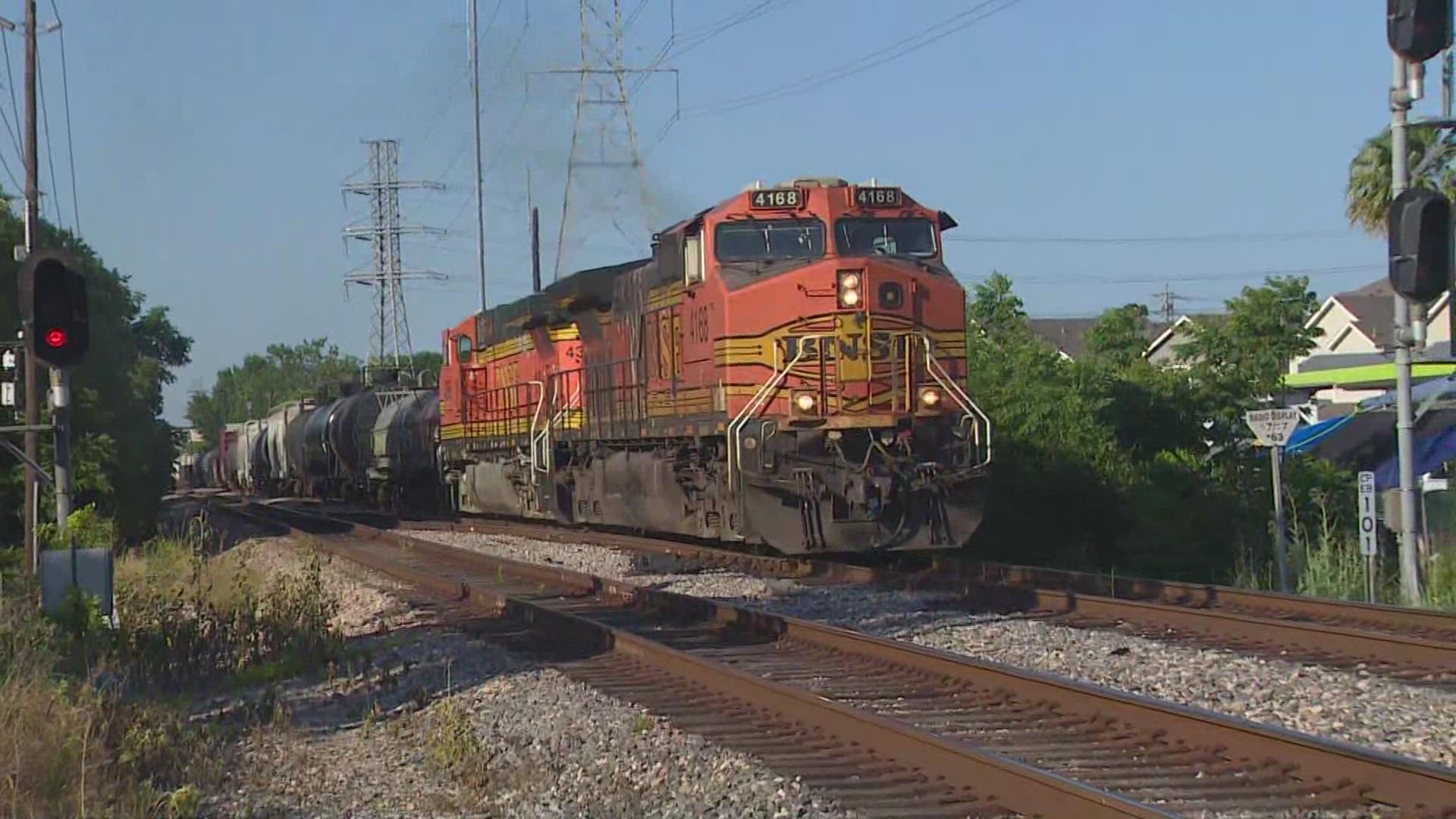HOUSTON — In the three months since KHOU 11 first reported on trains stopped on tracks in Houston neighborhoods, the city council is working to get them moving.
Currently, the responsibility is mostly on companies and the federal government.
Residents said the trains stay parked, sometimes for hours, interrupting travel and causing emergency responders to find new routes to calls.
On Thursday, city officials shared results so far of a pilot program using smart cameras at six railroad crossings to measure data.
Between March 10 and April 5 at a crossing at 5200 Lawndale, the data found 107 blockages lasting more than an hour and 32 lasting more than three hours. The longest lasted nearly 15 hours.
“The train stops have gotten longer,” said Clay Dippel, who has lived in the Eastwood neighborhood since December 2020. “There are more trains. The trains themselves are longer.”
Dippel said those blockages make planning tough and delays parents dropping off their kids at nearby schools.
“It just sits here freaking all night,” said Martin Wells, owner of H-Town Car Wash on Lawndale Street, next to the tracks. “I run a million-dollar company, but I’m losing a lot of money.”
It’s also forced Houston firefighters and paramedics to adapt response routes. Station 18 in Eastwood is surrounded by a triangle of train tracks.
“Since 2019, we’ve had over 3,200 instances where our first responder vehicles have had to divert as a result of the blocked intersections and crossings over the trains,” said Chief Sam Peña of Houston Fire Department during a joint city council meeting on the subject Thursday at City Hall.
Railroad officials told city council members several issues can stall trains. Those include mechanical problems, trespassers, or congestion from the number of goods moving through Houston because of the region’s economic growth.
“We are looking at what improvements can be made, some of which we had talked about earlier, between signal upgrades and within the yard itself,” said Richard Zientek, Senior Director, Public Affairs with Union Pacific.
Council Member Robert Gallegos, whose District I includes the Greater East End, said the city will send the smart camera data to the railroad companies.
He’s also been in touch with federal officials.
“Transportation Secretary (Pete) Buttigieg, he called me this morning,” said Council Member Gallegos. “He said that they will be looking at this committee meeting, the Department of Transportation, and he will make sure that the Federal Railroad Administration also looks at this information that we discussed today.”
Dippel also hopes council members will go after federal infrastructure dollars.
The city is currently designing underpasses to avoid railroad tracks on Commerce and York Streets.
Officials hope to expand the smart camera pilot program to railroad crossings in other neighborhoods.

